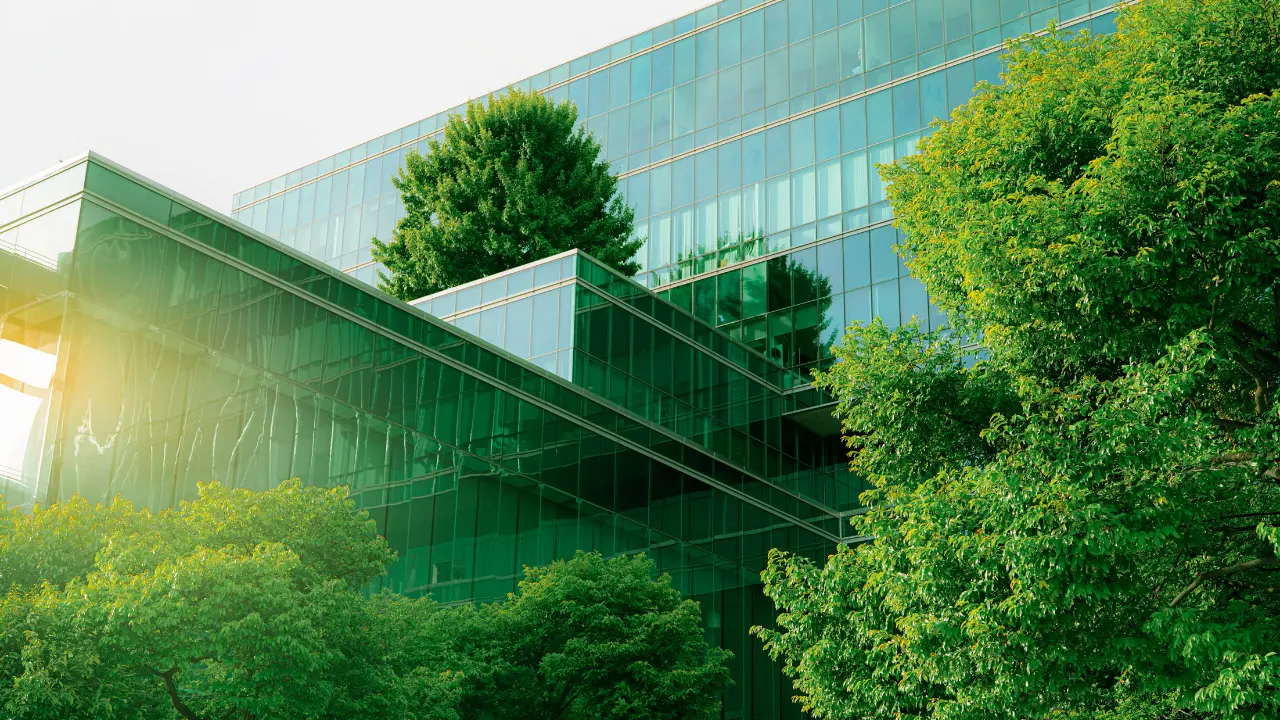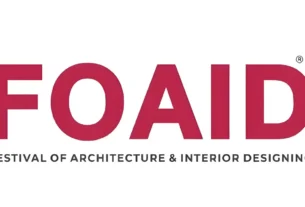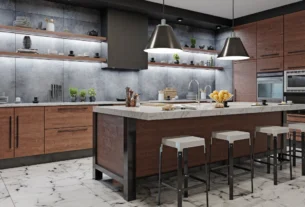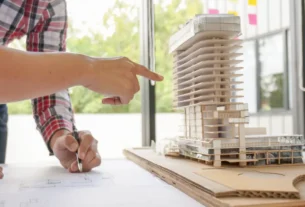Traditional building materials such as cement, fired bricks, and steel have long dominated the Indian construction scene. However, their production and use consume large amounts of energy and release significant greenhouse gases. With urbanization accelerating, India’s construction sector must find sustainable alternatives.
Eco-friendly materials offer a solution by being renewable, recyclable, energy-efficient, and less polluting. These materials help reduce the carbon footprint of homes while enhancing thermal insulation, indoor air quality, and overall living comfort.
They are a key component of India’s push towards green architecture, a theme strongly discussed in our previous article on Modern Home Architecture Trends in India 2025.
1. Fly Ash Bricks: Recycling Industrial Waste
Fly ash bricks are made from the byproducts of coal-fired power plants and have emerged as one of the most successful alternatives to traditional clay bricks in India. These bricks are lighter, more uniform in size, and offer better thermal insulation.
Their growing adoption, particularly in urban and semi-urban projects, has helped reduce the environmental burden associated with brick kilns, which contribute significantly to air pollution. Builders in cities like Delhi, Noida, and Pune are incorporating fly ash bricks as part of green building mandates and smart city development.
2. Compressed Stabilized Earth Blocks (CSEB): Soil-Based Sustainability
CSEBs are eco-friendly alternatives made from a mix of soil, sand, cement, and a small amount of water, compressed into bricks without burning. This technique, developed and popularized by Auroville Earth Institute in Tamil Nadu, preserves natural resources and uses locally sourced materials.
CSEBs are ideal for tropical and semi-arid regions in India as they provide natural insulation, regulate humidity, and blend beautifully with the surroundings. Homes built using this method are cost-effective, energy-efficient, and aesthetically rooted in Indian soil.
3. Bamboo: The Fast-Growing Green Steel
Often referred to as the “green steel” of construction, bamboo is a renewable material that grows rapidly and requires minimal processing. In Northeast India, bamboo has been used for centuries in vernacular architecture. Today, with modern treatment processes, bamboo is being reintroduced in mainstream Indian construction.
Its flexibility, tensile strength, and low carbon footprint make it a suitable choice for roofing, flooring, walls, and scaffolding. Architects and eco-builders across Goa, Kerala, and Assam are embracing bamboo for both residential and resort-style developments.
4. Rammed Earth: Traditional Technique with a Modern Twist
Rammed earth construction is making a comeback as an eco-conscious technique that uses compacted layers of natural soil, often mixed with small amounts of cement or lime, to form walls. This method is highly energy-efficient and has a low embodied carbon value.
Several award-winning eco-homes across Rajasthan, Karnataka, and Tamil Nadu are being constructed using rammed earth. It not only provides excellent thermal comfort but also creates strikingly beautiful textured walls that require no plaster or paint.
5. Recycled Wood and Timber Alternatives
The use of salvaged or recycled wood is gaining popularity as a sustainable alternative to newly harvested timber. Old doors, windows, and wooden furniture are repurposed to create rustic interior elements. Additionally, engineered wood products like medium-density fiberboard (MDF) and particle board—made from wood waste—are now common in kitchen cabinets and furniture.
Many eco-conscious developers are also turning to agro-waste panels made from bagasse, rice husk, or wheat straw, combining aesthetics with environmental stewardship.
6. Lime Plaster and Limecrete
Lime has been used in Indian architecture for centuries, especially in Mughal and Rajasthani buildings. Its natural antibacterial and breathable properties make it a fantastic replacement for cement-based plaster and concrete.
Modern eco-builders are now reviving limecrete—a mix of lime, sand, and gravel—as a flooring and substructure solution. It not only reduces carbon emissions during production but also absorbs CO₂ over time, making it a carbon-neutral material.
7. Solar Tiles and Reflective Roofing Materials
India’s hot climate makes roofs a critical part of energy efficiency. Reflective roofing materials, including white cement tiles and solar-reflective paints, are gaining popularity for reducing indoor heat and cutting down on air-conditioning needs.
Solar tiles, which generate electricity while functioning as part of the roof, are an innovative step toward net-zero energy homes. As solar technology becomes more affordable, we’re seeing adoption in premium projects in Bengaluru, Chennai, and Hyderabad.
8. Recycled Concrete and Demolition Waste
With India’s rapid redevelopment and urban renewal projects, tons of construction and demolition (C&D) waste are generated every year. Recycling this waste into aggregate and concrete is not only environmentally sound but also cost-effective.
Several startups and municipal corporations are setting up recycling plants to process demolished material into new bricks, tiles, and pavement blocks. These initiatives are especially prominent in cities like Ahmedabad, Mumbai, and Delhi.
9. Recycled Steel and Metal
Steel is integral to modern construction, but it’s also energy-intensive to produce. Recycled steel significantly reduces the environmental footprint while maintaining structural strength. It is widely used in framing, roofing, and foundation work in green buildings.
With advancements in technology, many eco-conscious projects in India are using recycled aluminum and copper for electrical conduits, window frames, and decorative elements.
10. Sustainable Insulation Materials
Thermal and acoustic insulation plays a vital role in reducing energy consumption in Indian homes, especially with rising temperatures. Eco-friendly insulation options now include:
- Cork panels: Renewable and mold-resistant
- Hempcrete: A biocomposite from hemp fiber
- Sheep wool and cotton batt: Biodegradable and safe to handle
These materials are slowly replacing synthetic foams and fiberglass in projects aiming for IGBC or GRIHA green certification.
Adoption Driven by Policy and Certification
The rising adoption of eco-friendly building materials in India is supported by government initiatives and green rating systems. Organizations such as:
- IGBC (Indian Green Building Council)
- GRIHA (Green Rating for Integrated Habitat Assessment)
- EDGE (Excellence in Design for Greater Efficiencies)
are promoting the use of sustainable materials through incentives, training, and recognition. Cities like Pune, Ahmedabad, and Chandigarh are pushing green mandates for new buildings, particularly in commercial and public sectors.
Cost and Accessibility: Are Green Materials Affordable?
While some eco-friendly materials are costlier upfront, the long-term savings in energy and maintenance often outweigh initial expenses. Additionally, local sourcing of materials like CSEB, lime, and bamboo reduces transportation costs and supports local economies.
As demand grows and production scales, prices of green materials are expected to become more competitive, making them accessible to middle-income homeowners, developers, and even affordable housing projects.
Challenges to Overcome
Despite growing popularity, the widespread adoption of eco-materials in India still faces hurdles such as:
- Lack of awareness among builders and consumers
- Limited supply chain and regional availability
- Resistance from traditional contractors
- Misconceptions about durability and strength
However, with greater education, training, and support from industry bodies, these challenges are steadily being addressed.
Conclusion
India is at a pivotal moment in its architectural journey. The shift towards eco-friendly building materials is not just a trend—it’s a movement aligned with the future of responsible construction. From recycled bricks to natural insulation, the materials being embraced today will shape the homes of tomorrow.
As sustainability becomes a non-negotiable element in urban planning, investing in green materials is both an environmental and economic win. For homeowners, architects, and developers, the message is clear: build green, build smart, and build for the future.








1 thought on “Eco-Friendly Building Materials Gaining Popularity in India”